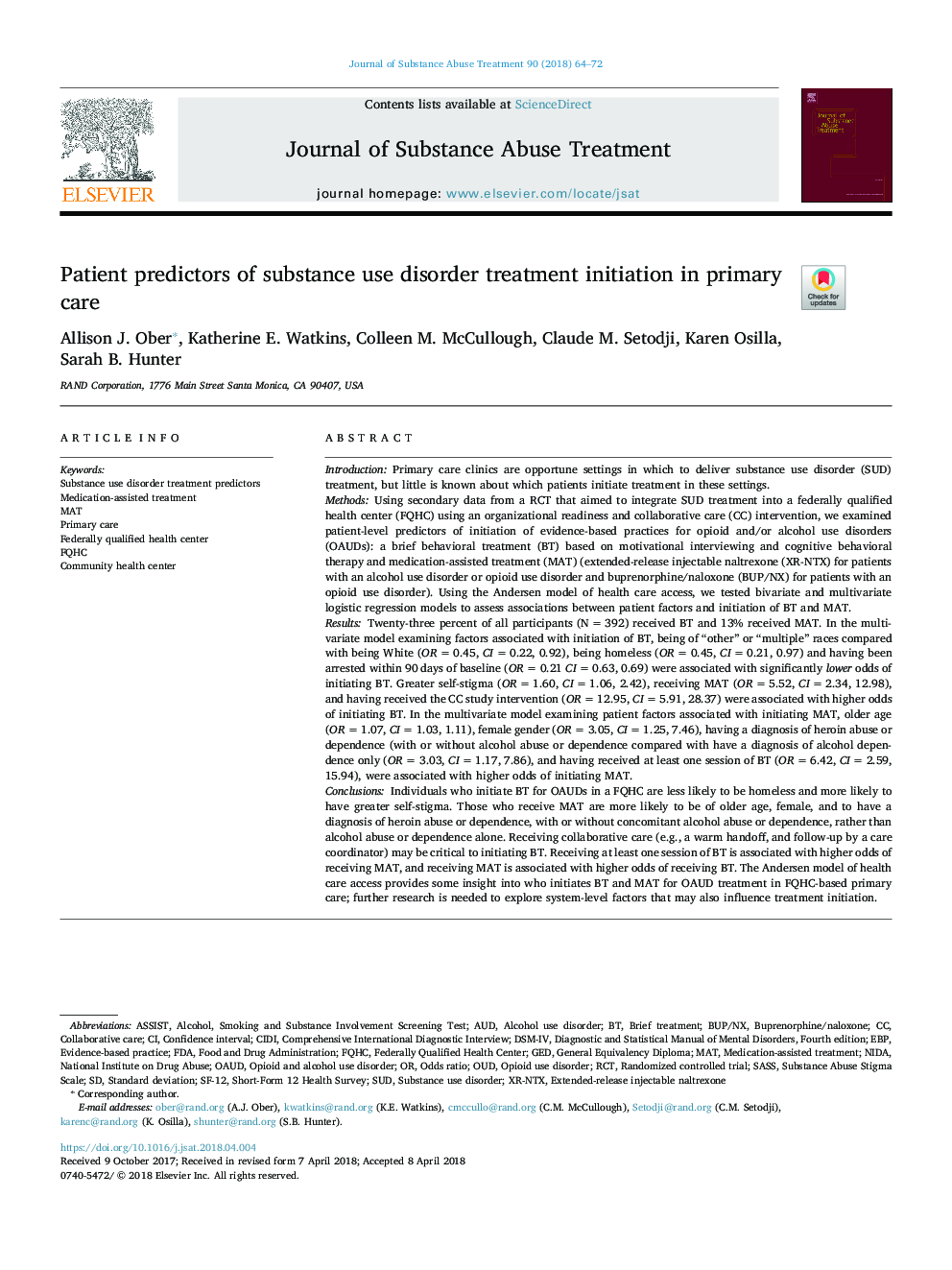| Article ID | Journal | Published Year | Pages | File Type |
|---|---|---|---|---|
| 6801608 | Journal of Substance Abuse Treatment | 2018 | 9 Pages |
Abstract
Individuals who initiate BT for OAUDs in a FQHC are less likely to be homeless and more likely to have greater self-stigma. Those who receive MAT are more likely to be of older age, female, and to have a diagnosis of heroin abuse or dependence, with or without concomitant alcohol abuse or dependence, rather than alcohol abuse or dependence alone. Receiving collaborative care (e.g., a warm handoff, and follow-up by a care coordinator) may be critical to initiating BT. Receiving at least one session of BT is associated with higher odds of receiving MAT, and receiving MAT is associated with higher odds of receiving BT. The Andersen model of health care access provides some insight into who initiates BT and MAT for OAUD treatment in FQHC-based primary care; further research is needed to explore system-level factors that may also influence treatment initiation.
Keywords
CIDIFDAOUDNIDASF-12EBPFQHCRCTASSISTDSM-IVGEDAudRandomized controlled trialAlcohol use disorderSubstance use disorderOpioid use disorderstandard deviationBuprenorphine/NaloxoneSUDMedication-assisted treatmentBrief treatmentDiagnostic and Statistical Manual of Mental Disorders, fourth editionFood and Drug AdministrationEvidence-based practiceconfidence intervalnational institute on drug abuseMatCollaborative careFederally qualified health centerCommunity health centerodds ratioPrimary care
Related Topics
Life Sciences
Neuroscience
Biological Psychiatry
Authors
Allison J. Ober, Katherine E. Watkins, Colleen M. McCullough, Claude M. Setodji, Karen Osilla, Sarah B. Hunter,
